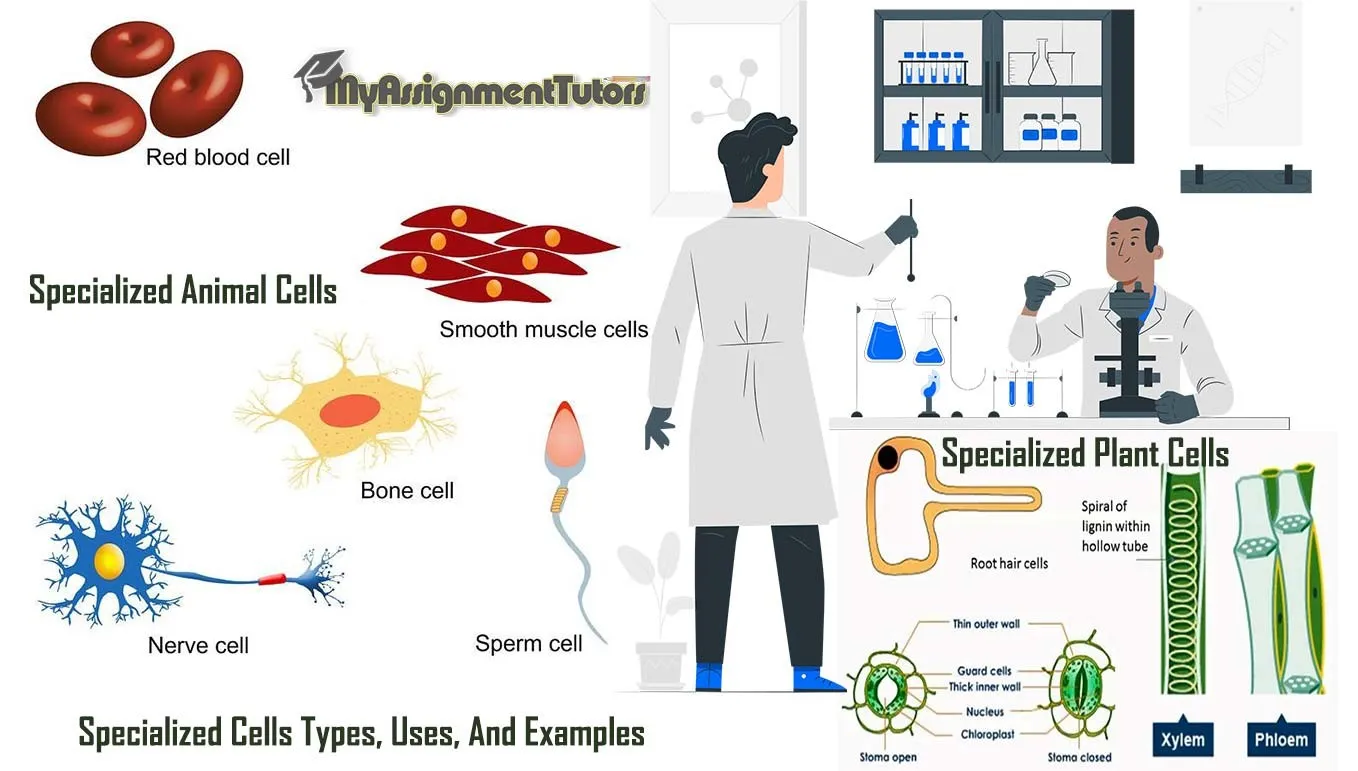Specialized Cells Types, Uses, And Examples
When a new organism is growing, initially all cells are the same, that is, they cannot be differentiated. As the organism develops, the cells become differentiable. It means that they develop sub-cellular structures. We call these cells specialized cells. These cells have the potential to carry out a particular function in the tissue, organ, or whole organism.

Types of specialized cells
The specialized cells can be classified into many categories. Since these cells are present in all the organisms, we will take a look at examples of the specialized cells in plants and animals.
Specialized Animal Cells
- Sperm cell – the function of this cell is to reach and fertilize the egg cell. It has got a tail that helps it to swim or move through the reproductive system to reach the egg. The mid-part has got many mitochondria to release energy for the movement of the tail. The head contains acrosome containing digestive enzymes to breakdown the egg and allows it to penetrate in. lastly, the nucleus contains the DNA to create the offspring.
- Muscle cells – their function is to contract and relax causing movements. They contain mitochondria to release the energy needed for contractions. The special proteins present in them which cause contractions by sliding across each other. They also store glycogen which is broken down into glucose to assist the respiration.
- Nerve cell – the function of the nerve cells is to carry electrical impulses around the body. It has an axon to carry the impulses in the body. The dendrites allow the nerve cells to connect with other nerve cells. Finally, they have got the nerve endings that release chemical messengers, which cause an electrical impulse to be carried in the next nerve cell having a lot of mitochondria to help the process.
Specialized Plant Cells
- Root hair cell – the function of this cell is the absorption of water and mineral ions from the soil. It contains a large surface area for greater absorption of water and mineral ions. There's then a huge permanent vacuole to speed up osmosis. There are a lot of mitochondria for the active transport of mineral ions by the release of energy.
- Xylem cell – these cells are responsible for the movement of water and mineral ions throughout the plant. They contain long hollow tubes that help in easy movement of water and mineral ions through them. They also have spirals of lignin to strengthen the cells and support the plant to stay upright.
- Phloem cell – this cell helps the transportation of food up and down the plants. They have the cell walls replaced into sieve plates that allow the food to dissolve through them. The companion cell, adjacent to the phloem cells, has a lot of mitochondria that release energy to move the dissolved food up and down through the plant.
Specialized cells assignment
Specialized cells be a common topic among science students for the assignment. It is indeed a complicated topic and requires a lot of research and understanding. Hence, time-consuming. We can be of a lot of help in your biology assignments. You could hire us as your biology assignment helper or your science assignment helper. We offer proper assistance and guidance to the students in their biology and science assignments. Error-free and non-plagiarised content as per given instructions and at affordable rates. Guaranteed value for money and within deadlines is what we provide.



